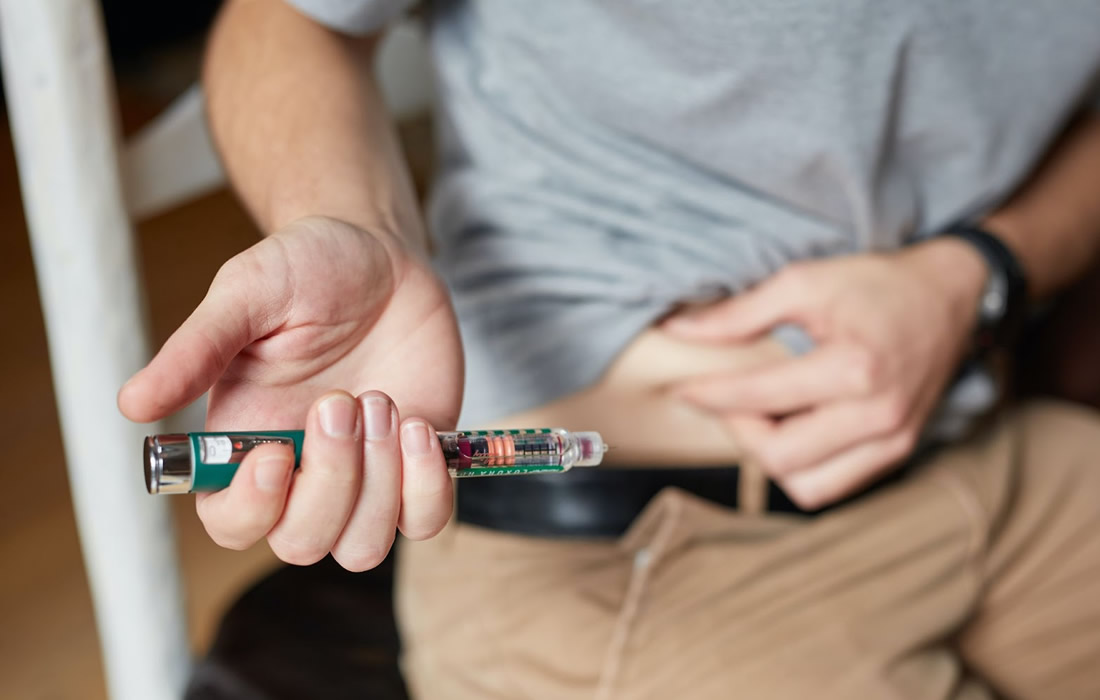Regenerative Medicine News and General Information
After Treatment with Semaglutide, Newly Diagnosed Type 1 Diabetes Patients Needed Little or No Insulin
Treating newly diagnosed Type 1 diabetes patients with semaglutide may drastically reduce or even eliminate their need for injected insulin.
A total of 10 patients at UB’s Clinical Research Center in the Division of Endocrinology were studied from 2020 to 2022, all of whom had been diagnosed in the past three to six months with Type 1 diabetes. The mean HbA1c level at diagnosis was 11.7, far above the American Diabetes Association’s HbA1c recommendation of 7 or below.
The patients were treated first with a low dose of semaglutide while also taking meal-time insulin and basal (background) insulin. As the study continued, semaglutide dosing was increased while mealtime insulin was reduced in order to avoid hypoglycemia.
“Within three months, we were able to eliminate all of the mealtime insulin doses for all of the patients,” says Dandona, “and within six months we were able to eliminate basal insulin in 7 of the 10 patients. This was maintained until the end of the 12-month follow-up period.”
During that time, the patients’ mean HbA1c fell to 5.9 at six months and 5.7 at 12 months.
For more than a decade, Dandona has been interested in how drugs developed for Type 2 diabetes might be utilized in treating Type 1 diabetes as well.
“As we extended this work, we found that a significant proportion of such diabetics still have some insulin reserve in the beta cells of their pancreas,” Dandona explains. “This reserve is most impressive at the time of diagnosis, when 50% of the capacity is still present. This allowed us to hypothesize that semaglutide, which works through stimulation of insulin secretion from the beta cell, could potentially replace mealtime insulin administration.”
From the outset, the goal of the current study was to see if semaglutide treatment could be used to replace mealtime insulin, thereby reducing the insulin dosage, improving glycemic control, reducing the HbA1c and eliminating potentially dangerous swings in blood sugar and hypoglycemia.
“As we proceeded with the study, we found that even the dose of basal insulin could be reduced or eliminated altogether in a majority of these patients,” he says. “We were definitely surprised by our findings and also quite excited. If these findings are borne out in larger studies over extended follow-up periods, it could possibly be the most dramatic change in treating Type 1 diabetes since the discovery of insulin in 1921.” Dandona explains.
Sources:
Paresh Dandona, Ajay Chaudhuri, Husam Ghanim. Semaglutide in Early Type 1 Diabetes. New England Journal of Medicine, 2023; 389 (10): 958 DOI: 10.1056/NEJMc2302677
University at Buffalo. “After treatment with semaglutide, newly diagnosed Type 1 diabetes patients needed little or no insulin.” ScienceDaily. ScienceDaily, 6 September 2023. <www.sciencedaily.com/releases/2023/09/230906171827.htm>.
Materials provided by University at Buffalo. Original written by Ellen Goldbaum. Note: Content may be edited for style and length.
Images from:
Photo by Sweet Life
https://unsplash.com/photos/0rXHOonM9Ug

